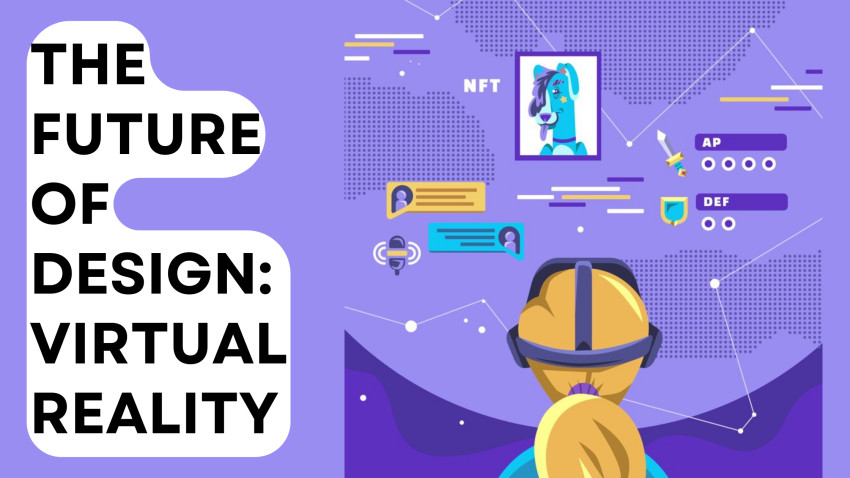
Blog Title: Vector Conversion in Virtual Reality: The Future of Design
Overview
A dramatic change in the ever-changing field of design is underway, with the potential to completely transform how we view and produce visual content. A novel trend that has emerged from the fusion of design and technology is vector conversion in virtual reality (VR). This merging creates previously unheard-of possibilities for designers to influence the direction of visual communication and unleash fresh creative potential.
Comprehending Vector Conversion
Vector Conversion: What is It?
Raster images are converted into vector graphics by vector conversion, which enables scalability without sacrificing quality. This method has long been used in design to guarantee clear images at different sizes. The true game-changer, though, will be how this method is incorporated into the immersive world of virtual reality.
Virtual Reality's Power
Virtual reality has developed into a potent tool for designers, beyond its beginnings in gaming. Designers can step inside and manipulate their creations in three dimensions by donning virtual reality headsets. This strengthens the bond between the artist and the piece of art by adding a concrete and participatory element to the creative process.
Benefits of Vector Conversion in Virtual Reality:
1. Immersive Design
Designers can move about and interact with their creations in a 3D world by using vector conversion in virtual reality. A true sense of scale and proportion is provided by this immersive experience, enabling more precise changes and improvements.
2. Effective Coordination
Global cooperation is facilitated by virtual reality. Regardless of where they are physically located, design teams can collaborate in virtual spaces and work on projects simultaneously. This boosts productivity and encourages team members to work together as a unit.
3. Adaptability Without End
The scalability of vector graphics is boundless by nature. This implies that designs can be smoothly altered and experienced independent of the canvas's size or the display medium when paired with VR technology.
4. Enhanced Originality
VR's ability to provide spatial freedom lets designers think beyond the box when it comes to typical screen sizes. This promotes creativity and pushes the bounds of artistic expression by encouraging the discovery of new design horizons.
The Effects on Different Industries
1. Entertainment and Gaming
Vector conversion in virtual reality has been quickly adopted by the gaming industry. With the ability to create immersive worlds with never-before-seen detail, game makers can now offer gamers an immersive and lifelike gaming experience.
2. Interior Design and Architecture
Virtual reality (VR) allows architects and interior designers to explore virtual versions of their designs. This helps during the design process and provides clients with an accurate sneak peek at the finished product.
3. Promotion and Sales
VR-enhanced vector drawings have the potential to provide more memorable and engaging advertising campaigns. Virtual product demos and interactive marketing campaigns become commonplace, completely changing the way that companies communicate with their target market.
Overcoming Vector Conversion Obstacles in Virtual Reality
Although vector conversion has enormous potential for virtual reality, it's important to solve the difficulties associated with this novel strategy.
1. The Learning Curve
Designers used to conventional techniques will need to go through a learning curve while embracing VR technology. To close this gap, training courses and user-friendly interfaces are crucial.
2. Hardware Restrictions
Robust hardware is necessary for VR experiences of a high caliber. VR headsets and sophisticated computers are necessities for designers, which may be prohibitive for individuals with limited funds.
3. Problems with Standardization
Since VR design is still in its early stages, there aren't many established best practices. This could be problematic for file sharing and interoperability across several systems.
The Path Ahead: Creating the Designs of Tomorrow
Vector conversion and virtual reality are going to make an even more seamless marriage as technology develops. Here are a few future projections:
1. Extensive Adoption
We anticipate a sharp increase in the use of VR-enhanced vector conversion tools across a wide range of businesses as the technology becomes more widely available and more reasonably priced.
2. AI integration
By automating time-consuming chores and freeing up designers to concentrate on the more creative aspects of their job, the inclusion of Artificial Intelligence (AI) algorithms will significantly streamline the vector conversion process in virtual reality.
3. Joint Virtual Studios
In order to create a worldwide community of creators, virtual reality will give rise to collaborative design studios where designers and artists from all over the world can gather in common virtual environments.




